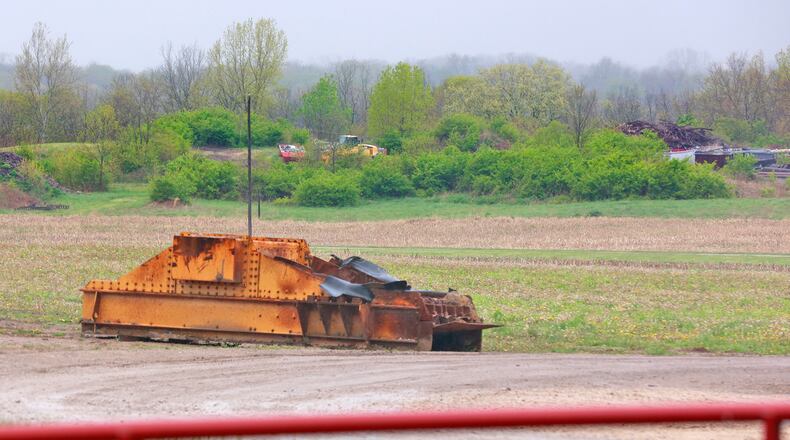Messaros must get a hydrogeologist to conduct additional studies beyond what has been completed. Another hearing will be held once additional information is received.
The Hullman Landfill was located nearby until it was shut down.
The site is also close to railroad tracks owned by Norfolk Southern.
Messaros told the board that he received a permit from the Ohio Department of Natural Resources and heard no concerns from the Ohio Environmental Protection Agency regarding the project. He said the EPA said there was nothing for it to review.
Messaros said the project will be 30 feet above the Mad River.
An Ohio EPA study found in 2007 there were sinkholes, karst — landscape underneath limestone that has been eroded and can produce sinkholes, fissures and more— and disappearing streams in the area.
Heather Raymond, the water quality initiative director at Ohio State University, told the board that she conducted the 2007 study when she was a hydrogeologist for the Ohio EPA. She said she found that the water in the township flows quickly and far distances during her study.
She said many of her findings remain the same today, but a water protection map created after the study is not accurate today because the water flow in the area has proven unpredictable.
Raymond said the project could potentially contaminate well water in the area. She said more studies on the area need to be conducted to ensure the project would not contaminate the water.
Tom Allen, retired assistant chief of the Division of Drinking and Ground Water for the Ohio EPA, told the board that the water from the Mad River flows to the Miami River. He said in Miamisburg, 80% of the water in the Miami River can come from the Mad River.
Allen said he is not against mining, but the Mad River watershed is “unique and special” and there have not been enough studies conducted in the area to understand the impact the quarry would have.
Larry Schafer, Clark County Combined Health District director of Environmental Health, said there is no guarantee the project will have no affect on groundwater, but he does not believe it will add to the wealth of unsafe water in the township. He said septic systems are worse for water quality than the quarry would be.
Schafer also said there is no evidence the landfill that was in the area will have a negative impact on the water if the mine is approved.
Messaros said the EPA told him that the proposed site is far enough from the landfill site to avoid any issues.
Greg Williams, who is working on the proposed project, said a plan for storm water management has been developed to put into place if the proposal is approved. He said the bottom of the proposed excavation is above a nearby railroad.
Board Chair Jerri Taylor said that in discussions with the ODNR, the board’s questions have not be satisfactorily answered.
Dr. David Zainey, a pediatrician in Springfield, said water can carry dangerous diseases like E. Coli — a bacteria that can be dangerous in high concentrations — and in the proposed quarry’s area, there is not enough till — a type of sediment — to properly filter water from contaminants.
Zainey said some contaminants could cause diseases like Parkinson’s later in life.
“You may see these diseases show up 20, 30 years after the exposure,” Zainey said.
Zainey expressed concerns the quarry could cause new sinkholes that could contaminate the area’s water.
Keith Best, a seismologist involved with the project, said the quarry is proposed for the Cold Springs Road location because that is where the limestone is.
“You can’t just develop a quarry anywhere … you have to go where the stone is,” Best said.
About the Author
